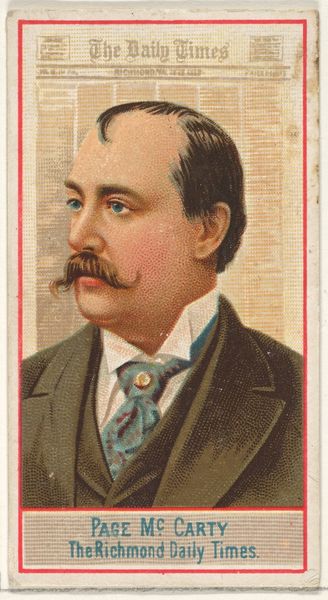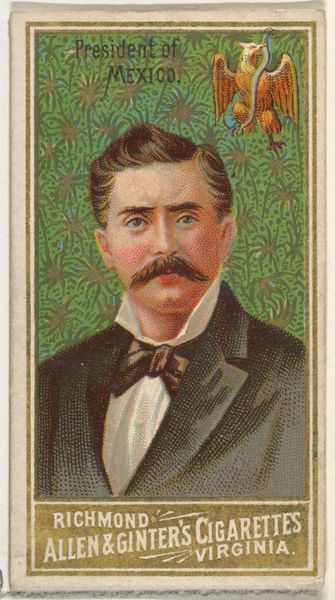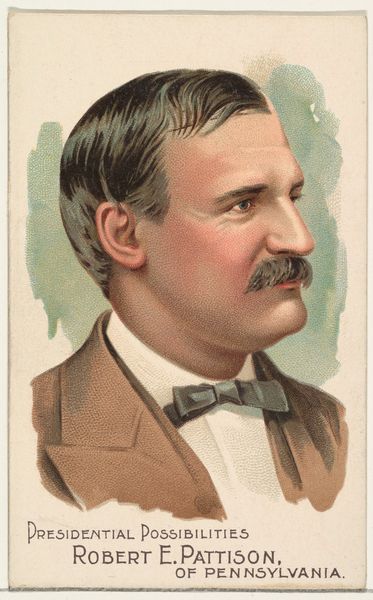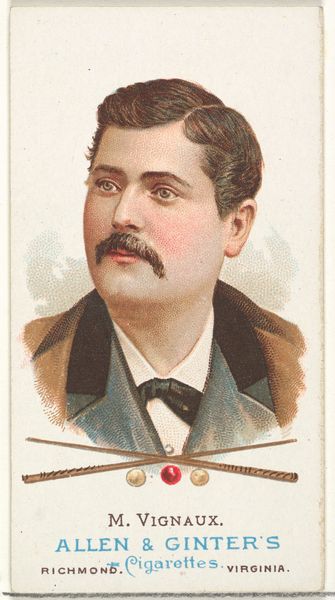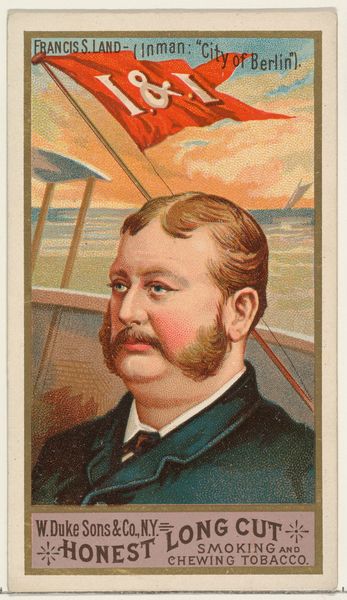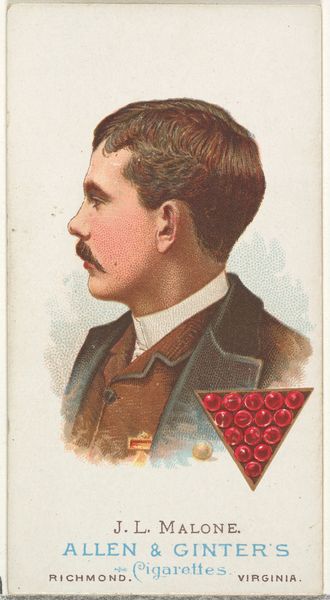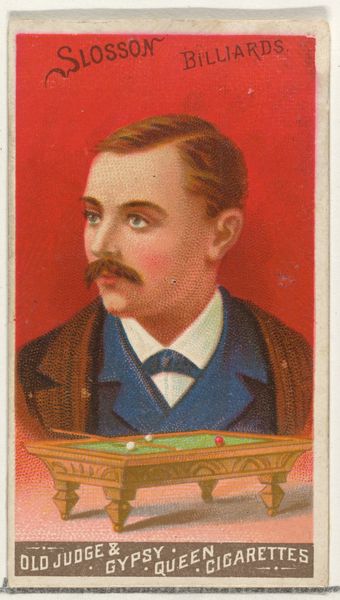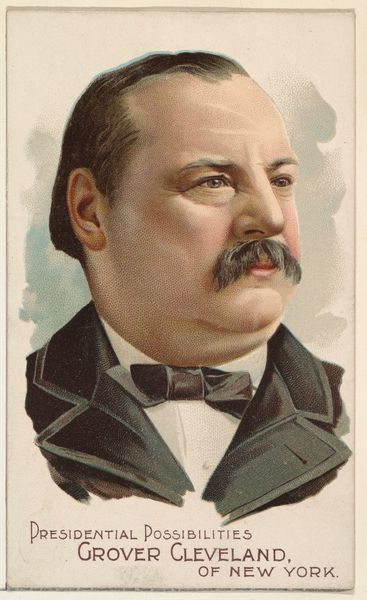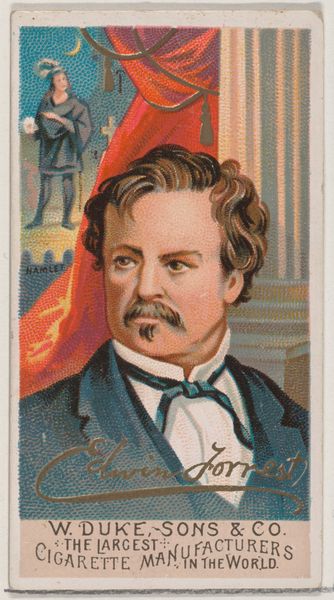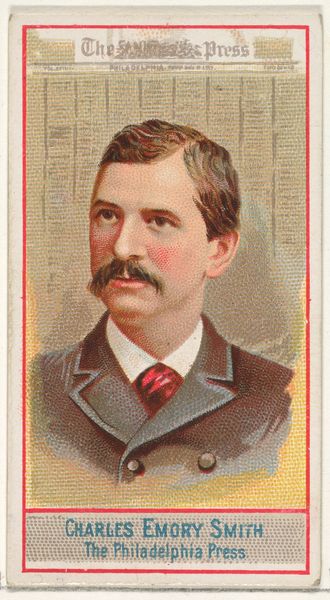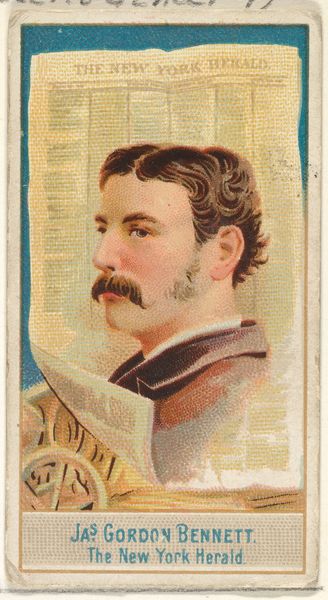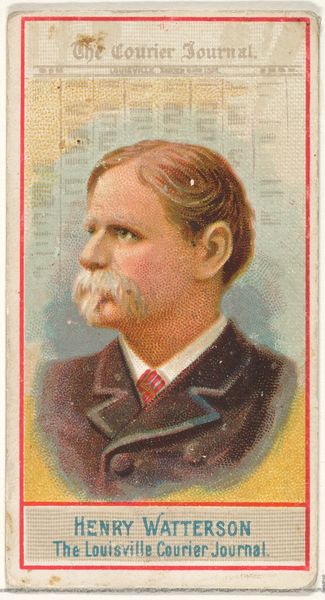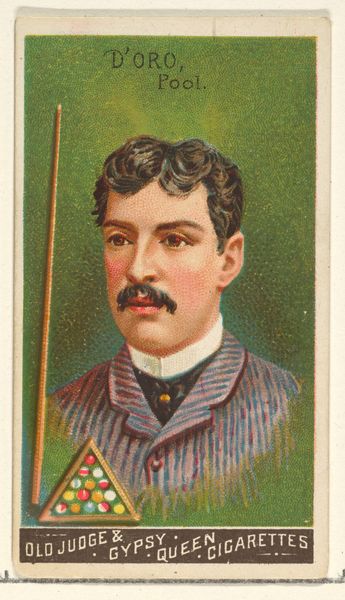
Henry McStanley, from the series Great Americans (N76) for Duke brand cigarettes 1888
0:00
0:00
Dimensions: Sheet: 2 3/4 × 1 1/2 in. (7 × 3.8 cm)
Copyright: Public Domain
Editor: So this little piece, "Henry McStanley, from the series Great Americans" is from 1888. It's a cigarette card, so a drawing reproduced as a print. It has a strange mix of seriousness in Stanley's portrait, and, well, caricature. The flat planes and the palm trees remind me of Ukiyo-e prints. What leaps out at you? Curator: What’s immediately striking is the structural contrast. Look at the meticulous, almost stippled, rendering of Stanley's face juxtaposed with the simplified, flattened background. Observe the artist's use of line. How does the graphic quality of the portrait clash with the background? And consider the textual elements - their inclusion challenges traditional notions of portraiture. Editor: It feels almost like two separate images awkwardly mashed together! Is the background maybe just a generic exotic landscape to place him within Africa? Curator: Exactly! The structural discord is the point. The image becomes a commentary on how "Great Americans" were constructed in the popular imagination. Note the interplay between figure and ground, how Stanley literally occupies the foreground, while the backdrop serves as a stage setting. What does this division tell us? Editor: It highlights a detachment...as if his "greatness" is somehow separate from the place he is associated with. I'm used to analyzing paintings, but I never thought about a cigarette card in this way. Curator: Precisely. And it's precisely this critical consideration of formal elements – the interplay of line, composition, and even text – that reveals deeper cultural assumptions encoded within seemingly simple images. Think about that juxtaposition between a carefully constructed portrait, with idealized "Africa" setting, and brash commercial advertisement. It becomes incredibly complex, does it not? Editor: Absolutely! It's much more than just a portrait on a card now; I am thinking about image composition as a method to deliver layered meaning and messaging.
Comments
No comments
Be the first to comment and join the conversation on the ultimate creative platform.

